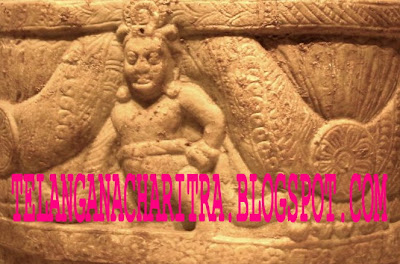


The Sātavāhana kings are also remarkable for their contributions to Buddhist art and architecture. They built great stupas in the Krishna River Valley, including the stupa at Amaravati in Andhra Pradesh. The stupas were decorated in marble slabs and sculpted with scenes from the life of the Buddha, portrayed in a characteristic slim and elegant style. The Satavahana empire colonized southeast Asia and spread Indian culture to those parts. Mahayana Buddhism, which may have originated in Andhra (northwestern India being the alternative candidate), was carried to many parts of Asia by the rich maritime culture of the Satavahanas. The Amaravati style of sculpture spread to Southeast Asia at this time.
The Satavahanas contributed greatly to the embellishment of the Buddhist stupa of Sanchi. The gateways and the balustrade were built after 70 BCE, and appear to have been commissioned by them. An inscription records the gift of one of the top architraves of the Southern Gateway by the artisans of the Satavahana king Satakarni:
Gift of Ananda, the son of Vasithi, the foreman of the artisans of rajan Siri Satakarni
Throughout, the Buddhist art of the Satavahanas remained aniconic, denying any human representation of the Buddha, even in highly descriptive scenes. This remained true until the end of the Satavahana rule, in the 2nd century CE.

No comments:
Post a Comment